As a representative of durable oolong teas, Tieguanyin's characteristic of "remaining fragrance after seven infusions" not only depends on the quality of the tea itself but also on the precise control of brewing techniques. This article will delve into the flavor changes of Tieguanyin across multiple infusions, the differential brewing techniques of purple clay pots and gaiwans, key operational details, and cultural etiquette, helping you master the brewing logic of Tieguanyin from basic to advanced levels, and fully release its mellow aroma and long-lasting charm.
1. Durable Characteristics of Tieguanyin: Dynamic Flavor Changes Across Multiple Infusions
(1) Essence of "Remaining Fragrance After Seven Infusions"
Basic standard: High-quality Tieguanyin can complete at least 7 effective infusions under standardized brewing, and each infusion can maintain clear aroma and taste;
Advanced potential: If the raw material grade is high (such as alpine Tieguanyin) and brewing techniques are proper (precise control of water temperature, time, and soup serving), it can even be brewed 10-20 times, showing the rich changes of "one infusion, one rhyme";
Source of durability: Derived from Tieguanyin's semi-fermented process and ball-shaped rolling form. The hemispherical structure slows down the release of internal substances, while the rich tea polyphenols, amino acids, and aromatic substances retained by semi-fermentation provide a material basis for the flavor of multiple infusions.
Aroma changes: The first infusion has the most intense and abundant aroma, with surface aromas such as orchid and honey fragrance released centrally, giving a strong sensory impact; the second infusion has significantly reduced aroma, but the aroma layers are more stable (deep roasted or floral and fruity notes gradually become prominent);
Taste characteristics: The two infusions have similar soup colors (both golden and transparent), but the first infusion has a lighter taste (only surface substances precipitate), and the second infusion has a richer and mellow taste (after cells are fully unfolded, internal substances are released more fully);
Cognitive misunderstanding: Some people misjudge tea quality due to the weakened aroma of the second infusion. In fact, this is a normal law of Tieguanyin's "aroma decreasing and taste increasing". It is necessary to further verify durability through subsequent infusions.

2. Selection of Brewing Tools: Differential Application of Purple Clay Pots and Gaiwan
Core advantages:
Good heat preservation: Purple clay material conducts heat evenly and dissipates heat slowly, which can stably maintain high temperature, promote the release of deep substances in Tieguanyin, and is especially suitable for brewing Tieguanyin with a slightly higher roasting degree;
Adsorption and coordination: The microporous structure of purple clay can slightly adsorb bitter and astringent substances in tea, making the tea soup more mellow and smooth, reducing irritation;
Fun of pot cultivation: Using the same purple clay pot to brew Tieguanyin for a long time, the pot body will absorb tea aroma, forming a virtuous cycle of "pot nurturing tea and tea nurturing pot";
Applicable scenarios: Daily family drinking, gatherings of old friends and other scenes focusing on mellow taste and ritual sense;
Operation points: Fully scald the pot with hot water before use (both inner and outer walls and the lid need to be preheated). The amount of tea can be slightly more than that in a gaiwan (about 6-8 grams/120ml pot). Use the aroma-gathering property of the purple clay pot to stimulate tea aroma.
(2) White Porcelain Gaiwan: Intuitive and Precise Control
Core advantages:
Convenient observation: White porcelain material has no adsorptivity, which can clearly show the color change of the tea soup (from golden to amber), making it easy to judge the unfolding degree of tea leaves and the timing of soup serving;
Flexible temperature control: The heat dissipation speed of the gaiwan is faster than that of the purple clay pot. The temperature can be adjusted by opening or uncovering the lid to avoid over-ripening of tea leaves;
Intuitive operation: The opening design of the gaiwan is convenient for observing the unfolding state of tea leaves in water, allowing beginners to quickly master the brewing rhythm;
Applicable scenarios: Beginners practicing brewing techniques, tea quality comparison and tasting, teaching demonstrations and other scenarios requiring precise control;
Operation points: Choose a standard gaiwan of 100-120ml, with 5-7 grams of tea. Use the "non-interference" characteristic of white porcelain to truly present the original flavor of Tieguanyin.

3. Formal Brewing Steps: Golden Rules of Time, Water Injection, and Soup Serving
First infusion: Appropriately extend the brewing time (about 15-20 seconds) — because the dry tea is hemispherically compact, it takes enough time for the tea leaves to initially absorb water and unfold, ensuring the start of internal substance release;
Second infusion: The time is slightly shorter than the first infusion (about 10-15 seconds) — after the first infusion, the tea leaves have partially unfolded, and the release speed of substances is accelerated. Shortening the time can avoid strong and astringent taste;
Subsequent infusions: Starting from the third infusion, each infusion can be extended by 5-10 seconds (e.g., 20 seconds for the third infusion, 25 seconds for the fourth infusion) until the tea soup taste fades significantly;
Key principle: Time adjustment should be based on the concentration of the tea soup — if a certain infusion is too light, the next infusion can be extended; if it is too strong, it can be shortened to flexibly respond to individual differences of tea leaves.
Water flow control: Adopt the method of "low and slow pouring". The water flow is slowly injected along the gaiwan or pot wall (height no more than 2cm), avoiding direct flushing of tea leaves to prevent them from rolling and breaking (breaking will cause excessive precipitation of bitter substances);
Water volume standard: Inject water to 4/5 of the utensil's capacity (the gaiwan needs to leave space to avoid soup overflow, and the purple clay pot needs to submerge the tea leaves with 1-2cm of water surface left);
Water temperature maintenance: Tieguanyin needs high-temperature brewing (95-98℃). Before water injection, ensure the hot water temperature is stable (hot water can be preheated through a fairness cup before injecting into the utensil) to avoid insufficient water temperature leading to difficulty in stimulating tea aroma.
Core requirement: Whether using a purple clay pot or a gaiwan, the tea soup must be completely poured out during serving (the spout or gaiwan needs to be tilted until no soup drips), avoiding residual soup continuing to soak tea leaves in the utensil, which will cause the next infusion to be too strong or bitter;
Operation skills:
When using a purple clay pot, gently lift the lid to let excess soup flow out;
When using a gaiwan, leave a thin gap between the lid and the bowl body to ensure the soup drains quickly;
Easily confused points: Different from the "remaining root brewing method" (deliberately retaining part of the soup), Tieguanyin needs to "leave no residual soup" because of its strong durability. There is no need to maintain subsequent taste through leaving roots, which may easily lead to flavor imbalance.
4. Operational Precautions: Anti-Scald Techniques and Tea Distribution Etiquette
Standard technique: Thumb and middle finger gently hold the edge of the gaiwan (1/3 of the outermost edge of the bowl, where heat dissipation is fast and temperature is low), index finger gently rests on the lid knob to fix the lid, ring finger and little finger naturally bend;
Force point: Wrist exerts force instead of fingers Hold tight. Control the tilt angle of the gaiwan through wrist rotation, and keep stable when serving soup to avoid soup splashing;
Practice suggestion: Beginners can first practice with cold water to master the technique, then use hot water to ensure safety and fluency.
Tea pouring standard: When distributing tea to tasting cups, follow the "seven-tenths full" principle — the tea soup capacity accounts for about 70% of the cup, which is convenient for guests to hold the cup (avoiding scalding) and leaves space to gather aroma;
Cultural connotation: "Tea ceremony seven-tenths full, leaving three-tenths for friendship" embodies the Chinese people's hospitality of "modesty and kindness", not pursuing overflowing materials but focusing on emotional communication with blank space;
Operation details: When distributing tea, pour back and forth ("Guan Gong patrols the city") to ensure uniform concentration of each cup of tea, and finally drain the drops ("Han Xin points soldiers") to show the integrity of the tea soup.

5. Water Temperature Control and Caffeine Regulation: Practice of Scientific Tea Drinking
Temperature benchmark: The suitable water temperature is 95-98℃ (close to boiling water but not violently rolling). High temperature can destroy the tea cell structure, promote the release of aromatic substances (such as linalool and geraniol) and soluble sugars, and stimulate the unique aroma of Tieguanyin;
Temperature impact: Insufficient water temperature (below 90℃) will lead to flat aroma, light taste, and incomplete tea unfolding; excessive water temperature (above 100℃) may destroy some aroma substances, making the tea soup have a stuffy cooked taste;
Seasonal adjustment: Slightly higher water temperature (98℃) can be used in winter to offset the fast environmental heat dissipation, and slightly lower (95℃) in summer to avoid the tea soup being too hot to affect tasting.
Principle mechanism: Caffeine is easily soluble in hot water and dissolves quickly. If the brewing time is shortened, its content in the tea soup can be reduced (tea polyphenols, amino acids and other flavor substances dissolve slightly slower than caffeine);
Practical skills: When brewing before bed, adopt the "quick soup serving method" — the first infusion is poured out after 5-10 seconds of brewing, and subsequent infusions are also controlled within 15 seconds. Caffeine precipitation is reduced by shortening the time;
Cognitive correction: The traditional concept of "no tea before bed" is too absolute. Tieguanyin can reduce irritation through technique adjustment, suitable for people with low caffeine sensitivity to taste lightly before bed.

6. Knowledge Summary: Key Points of Tieguanyin Brewing
The advanced brewing of Tieguanyin combines "technical precision" and "humanistic care". From the selection of purple clay pots and gaiwans to the dynamic adjustment of time across multiple infusions; from the inheritance of "seven-tenths full" etiquette to the scientific tea drinking of caffeine control — every detail carries the understanding of tea properties and respect for tasters. When you can make Tieguanyin still have residual fragrance after ten infusions and keep the tea soup clear and mellow under high-temperature brewing, you have mastered the core wisdom of oolong tea brewing: not only the proficiency of techniques but also the practice of the tea ceremony spirit of "harmony between man and nature".


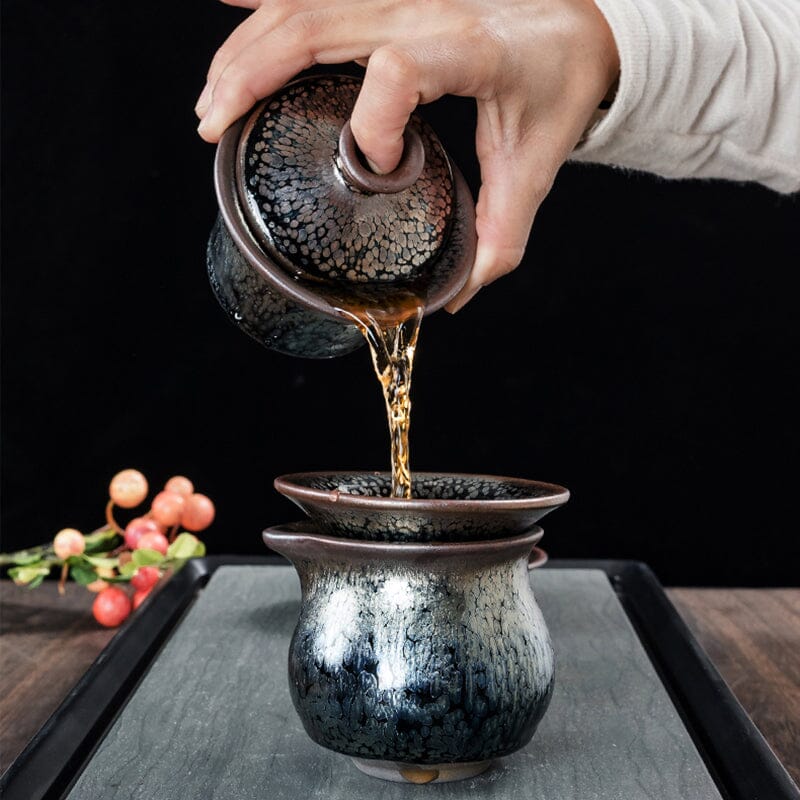
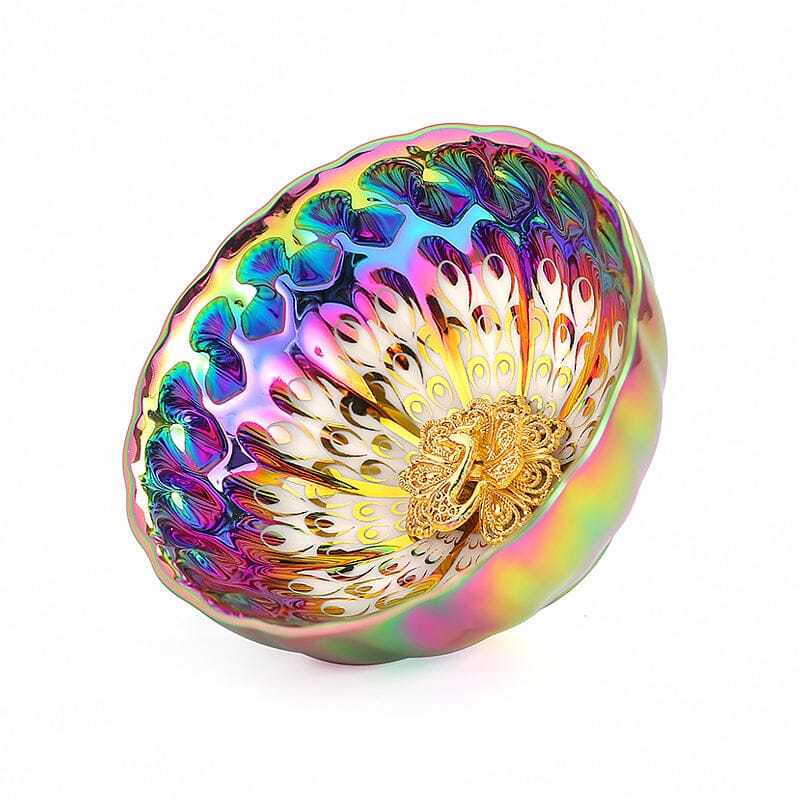


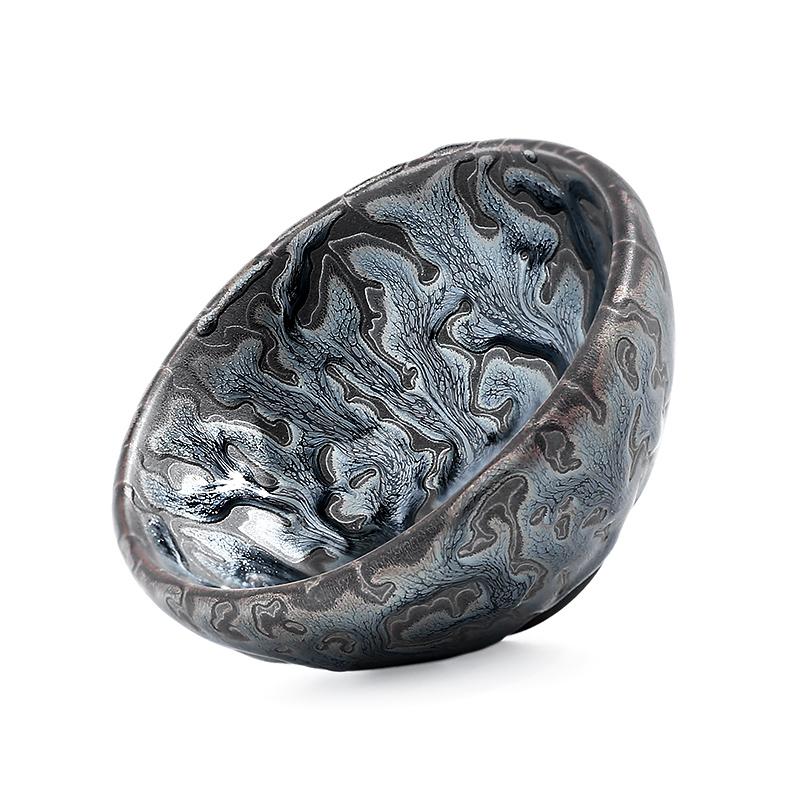
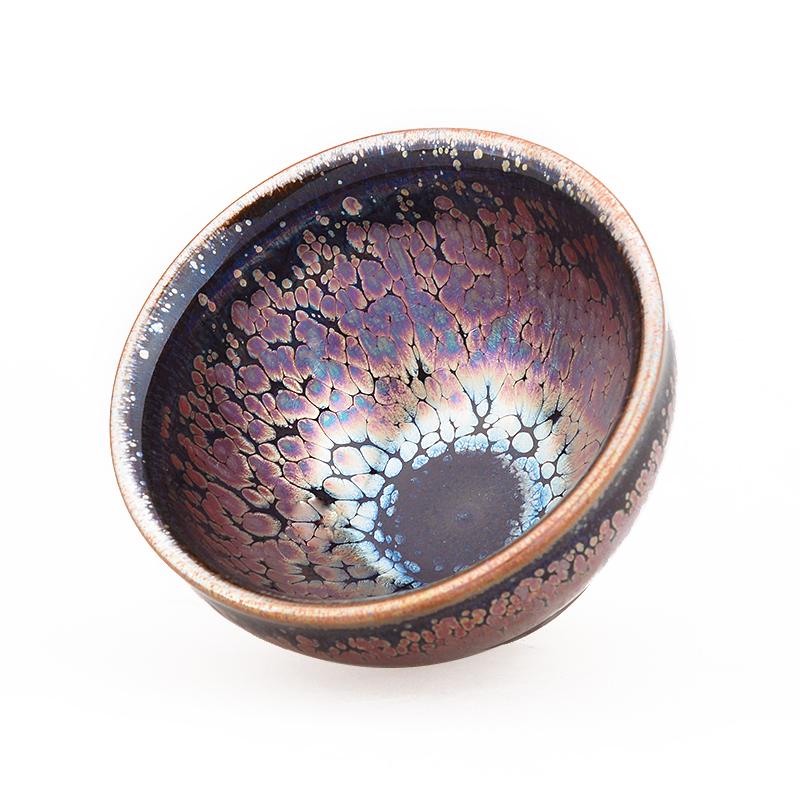
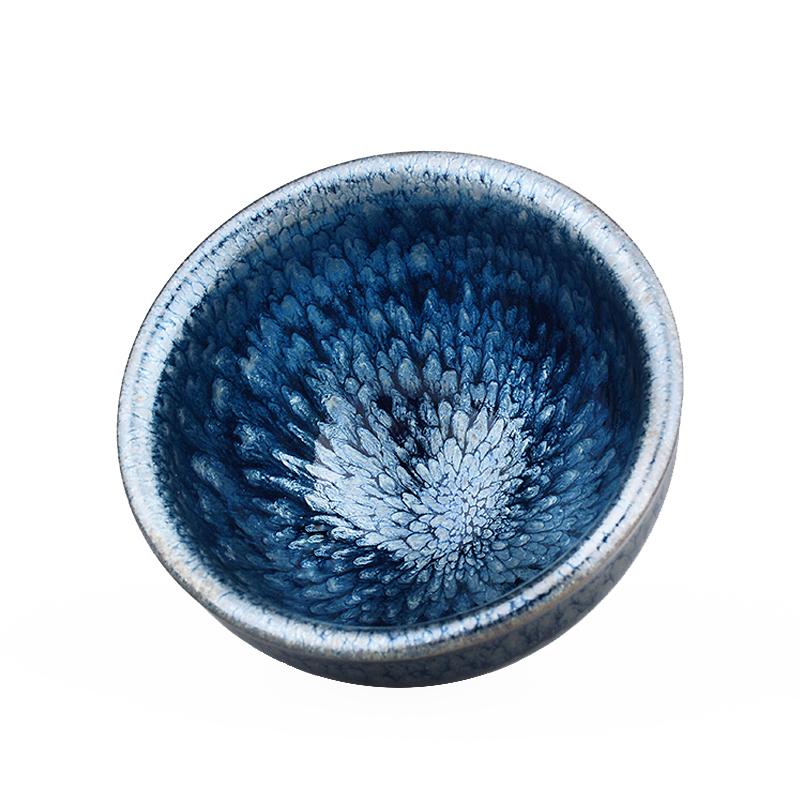
Share:
Brewing Oolong Tea – Tieguanyin (Part I): A Basic Guide from Awakening Tea Properties to Tasting Etiquette
Brewing Oolong Tea - Dongding Oolong (Part I): Classic Oolong Brewing and Flavor Exploration